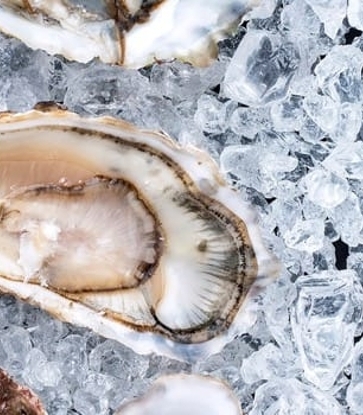There are a myriad of reasons people choose to be vegetarian. Traditionally, parental preferences, moral or religious beliefs were the factors, but increasingly, health and environmental concerns have become the oft-cited reasons for going green.
In fact, according to Google Trends data, the search interest for “vegan” peaked right at the turn of 2017—likely from people trying to make new year’s resolutions to live better—and is still on an upward trend.

It most certainly helps that the vegan/vegetarian movement has shed its stuffy image with its growing popularity on social media and among celebrities—Ellie Goulding and Liam Hemsworth are just tow examples of prolific vegans. In addition to this, it has become more accessible to adopt a meat-free diet, with more vegetarian and vegan options in supermarkets and restaurant menus.

Going green isn’t as straightforward as it seems though, and there is a whole spectrum of vegetarian diets that have their own inclusions and exclusions. If you are considering taking the plunge and giving up meat, picking the right kind of vegetarian diet may be confusing for you.
Here, we offer a list of vegetarian diets that you can adopt—and a bonus one at the end if you’re just looking to dip your toes in the (green) water.
Veganism
Adherents to the vegan diet do not consume animal meat or animal products such as eggs, dairy and honey. You can further embrace vegan living by avoiding the use of other animal by-products like leather, fur, silk, wool, and cosmetics and soaps with animal-derived ingredients.
Raw Veganism
Give your stove a break with this diet that excludes all food and products of animal origin, as well as food cooked at a temperature above 118˚F (48°C). The idea is that heating food destroys its nutrients and natural enzymes that boost digestion and fight chronic disease.
Fruitarianism
This very controversial diet is a subset of raw veganism and involves—as its name suggests—a diet consisting of about 75% raw fruit by weight, and 25% nuts and seeds. Managed improperly, you will not be able to get all your nutritional needs from this diet. The late Steve Jobs adopted fruitarianism for some time claiming it fueled his creativity, but when actor Ashton Kutcher tried it for a month before playing Jobs in a film, he wound up in hospital.
Ovo-vegetarianism
This type of vegetarianism allows for the consumption of eggs—“ovo” is Latin for egg—but not dairy products. The driving motivations are based on the perceived cruelty of the industrial practice of keeping a cow constantly lactating and slaughtering unwanted male calves, as opposed to egg-laying hens which produce unfertilized eggs for consumption.
Lacto-vegetarianism
Conversely, lacto-vegetarians (“lacto” from the Latin root word for milk) do consume dairy products but cut out eggs from their diets. Lacto-vegetarian diets are popular with many followers of Eastern religious traditions such as Hinduism, Jainism, Buddhism and Sikhism.
Ovo-lacto-vegetarianism/Vegetarianism
When someone says they’re vegetarian, this is what they usually mean. General vegetarians do not consume meat of any kind, but eat both dairy and egg products. This is a great starting point if you want to go green and it is a relatively easy diet to follow with adequate calcium and protein intake.
Pescetarianism
A pescetarian’s diet includes fish and seafood in addition to vegetarian foods such as beans, vegetables, fruits, dairy and grains. Looking for sustainable seafood sources benefits the environment, while including fish in a vegetarian diet will ensure a healthy amount of iron.
Flexitarianism
Here’s one for those not quite ready to commit: you can still do your part for the environment and your health by reducing meat consumption through movements, like “Meatless Monday,” which has been embraced around the world. This diet is more about adopting a healthier eating habit by including more vegetarian meals and seeing meat as more of an occasional accompaniment.















